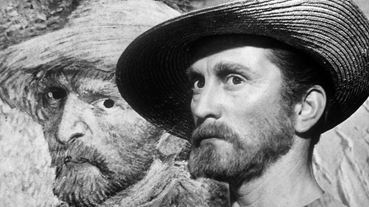In recent years, the story of Van Gogh’s infamous self-mutilation and later suicide has been placed in doubt. Some German art historians have decided that the cut to the ear followed a quarrel with fellow artist Gauguin, who pulled a knife and injured the painter, and that in order to protect his irascible friend, Van Gogh concealed the incident. These experts base their argument on coded references they have found in the ample correspondence between Van Gogh and his brother, as well as on that traditional fallback of the penultimate generation of police procedurals: forensic evidence.
More recently still, other art historians, not satisfied with the ear, have gone for the big prize – Van Gogh’s suicide, and tried to turn it into murder. According to this version, the painter fell victim to the bullying of a provincial chap with cosmopolitan airs who liked to carry a rifle and, in a countryside row with Van Gogh, killed the artist before fleeing the region. The same items – letters, records, rumours and forensic interpretation – back up the paradigm shift.
These theories have been challenged by others – among them those who wish to keep the faith and allow nothing to get in the way of their pilgrimage to the painter’s mausoleum, the Van Gogh museum in Amsterdam, as well as by historians who like to eat historians for lunch, and make history for historians by refuting what the other historians say so as to go down in the history of history as historians. Such parties point out that the evidence for the above theories is inconclusive and have subsequently brought in their own forensic teams to bolster existing beliefs.
The Van Gogh legend, of course, has been around forever, and the bodies of evidence for the ear and the suicide are inconclusive. But more than being about the history of art, what all this shows is our appetite for stories. In a magazine like this one, bringing up Van Gogh may seem anachronistic, too premodern or modern for the sophisticated world of contemporary art, but the strange thing is that, despite the century that separates us from the Dutchman, the role of storytelling continues to dominate attempts to understand what happens in a work of art and in the production of an artist.
The Van Gogh legend, of course, has been around forever, and the bodies of evidence for the ear and the suicide are inconclusive. But more than being about the history of art, what all this shows is our appetite for stories
This is true in the business world too: as corporate logos become more abstract, flat and simplistic, greater emphasis is placed on CEO s and the stories they themselves must convey (Jobs was to Apple as Branson is to Virgin and Zuckerberg to Facebook). So just as the limited gospel of some brands is incarnated in a person (compensating for the impassivity of its graphic design with the emotiveness of its leaders), in the artworld the success of many careers seems to be determined by artists’ knack for storytelling, and by the hair-splitting narratives of their public-relations people (which include journalists, gallerists, curators and historians).
For example, an impressive crack, created in the floor of a hall in an important gallery (Tate), is given a coded name (Shibboleth, 2007), a word with mystic overtones; then a text is added that speaks of divisions between the rich and the poor, the welcomed and the excluded. Now, rather than being seen for its tremendous power as sculpture, as the opening to a sign that something can exist without the chimera of language, the composition becomes a symbol that is meticulously tended to by the bureaucrats of repetition, who make it their responsibility to spread the word, transporting the Third World artist (Doris Salcedo), this eternal sufferer, to the altar of art, and into the canon.
No mention is made, of course, of the fact that the company (Unilever) that’s sponsoring the exhibition is globally known for contributing to the very social fracturing the artist denounces. No, with storytelling there is no need to depart from the script: stories produce experiences, stories reveal what makes your message unique, stories are the emotional glue that connects you with your customers, stories shape information into meaning, stories motivate an audience towards your goal, stories are more likely to be shared, stories are less likely to be resisted. This is almost invariably the mantra when writing about a work or an artist, always positive, always hagiographic (the curatorial text must not criticise).
The difference from Van Gogh’s case is that now the storytelling comes before, follows and overtakes the very fact of the exhibited work. Instead of producing an initial uproar that brings on the possibility of silence, artists and their scribes fill the space around the works with rambling, self-satisfied noise whose only goal is to sell.
Translated from the Spanish by David Terrien. This article was first published in the March 2015 issue.
